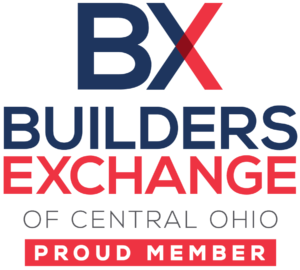Many of us behaved during our juvenile and adolescent years because parents and authorities told us that any transgression would “go on our permanent record.” This was usually followed by the reminder that “the world needs ditch diggers, too.” It turns out that few convictions pose an insurmountable obstacle to a career, including the practice of law — as I learned when an acquaintance with a breaking-and-entering conviction was admitted to the bar.
The government has an interest in preventing people, including criminals, from being unemployable. However, there have been so many cases involving employment of criminals recently, that now is a good time to review the employment law regarding criminal acts.
Disparate Impact on Minorities. Because African-Americans and Hispanics have a higher conviction rate than other ethnic groups, a blanket no-conviction policy might result in the disparate exclusion of minorities from the workplace. Minority applicants screened out by these policies have the right to sue under Title VII and most state acts, including Michigan’s Elliott Larsen Civil Rights Act [ELCRA], even if there were no intent to discriminate. Although most cases have applied this doctrine to misdemeanors, the law has expanded to include felony convictions. The foundational cases during the 1970s and 1980s involved manual jobs for which the applicant pools represented a cross-section of the entire population. However, the U.S. Supreme Court has ruled that “figures for the general population might not accurately reflect the pool of qualified applicants,” In the Information Age, it would be interesting to see if the EEOC can produce data that African-Americans or Hispanics with college degrees have more convictions proportionately than their nonminority comparables.
EEOC policies disqualify those with convictions (and poor credit scores). The EEOC requires employers to give individualized attention to each conviction, weighing: (1) the nature and gravity of the offense; (2) the time that has passed since the conviction or completion of the sentence; (3) and the nature of the job. This can be time-consuming and costly, especially for large companies such as Walmart, which make thousands of employment decisions on an ongoing basis. However, less-costly, bright-line policies might result in litigation.
Statutory Limitations. Some states limit an employer’s consideration of convictions regardless of ethnicity. Washington and Hawaii prohibit considering convictions more than 10 years old for everyone. Washington, Pennsylvania, and Wisconsin prohibit employers from making decisions based on felony or misdemeanor convictions unless the conviction is job related. New York does the same, and requires employers to consider the timing of the conviction and the safety and welfare of individuals and the public. Hawaii is the most onerous in this regard, permitting an inquiry about convictions only after a conditional offer of employment, and precluding disqualification unless the conviction relates to the duties and responsibilities of the job.
Although job-relatedness might seem to make sense, managers and business owners face scenarios in which this requirement is unworkable. For example, the best mechanic available might be a convicted rapist, a crime which does not seem to be related to the duties of his job. In another context, must an employer hire a convicted pedophile for a job that does not involve contact with children, and (knowing the recidivism rates for pedophilia), hoping that he won’t commit another offense that might connect their business to the sordid news? Are drug convictions ever job related? The unfortunate effect of these laws is to empower convicted criminals to challenge hiring decisions, cast honest business people as evildoers, and put them to an expensive defense.
Criminal Acts That Did Not Lead to Conviction. As a former criminal prosecutor, I know that plenty of criminal acts don’t result in convictions. Diversion programs exist for offenders under the age of 21 and first-time drug offenders of all ages. If the police engage in an improper search or fail to read arrestees their Miranda rights, evidence is suppressed and the case dismissed. In other cases, witnesses can’t be located, or are intimidated (sometimes murdered or are otherwise too fearful to testify). In rare cases, the defendant is acquitted due to insanity, although he or she is not mentally ill, and must soon be released.
However, the behavior leading to the arrest might be significant in making an employment decision. For example, an applicant for a health care position with access to controlled substances might have recently gone through a drug diversion program. An applicant who avoided a home invasion conviction because the police botched a search might have left a career of theft only after learning the police have him under surveillance. If you knew about the home invasion, you would want to keep your distance from the perpetrator. However, many states have laws that effectively bring these people into the workplace.
Fortunately, the Michigan ELCRA is limited to a prohibition against requesting or making a record of a misdemeanor arrest that did not lead to conviction. Inquiries about past felony arrests are not mentioned and inquiries about pending felonies are expressly allowed.
Other states grant broader protection: Most states have provisions that applicants need not volunteer information about sealed records (which usually occurs after a diversion program). Colorado and Virginia prohibit disclosures of such sealed proceedings even upon inquiry; and Georgia and Illinois prohibit disqualification from employment based on them. California, Hawaii, Massachusetts, New York, Rhode Island, Washington, and Wisconsin all prohibit employers from asking about or making decisions based on of any arrests (felony or misdemeanor) that did not lead to conviction; only California provides an exception for health care employees with access to patients and medication.
Occasionally, court decisions permit employers to drill down and make decisions based on underlying conduct, even where no conviction resulted. However, if you face a hiring decision in one of the states mentioned, do your research to learn about one of these hair-splitting decisions.
Expunged Convictions. In Michigan, a conviction can be expunged after five years, if there are no further convictions other than minor misdemeanors. Only one conviction may be expunged. Almost all states provide that once an offense is expunged, an applicant need not identify the prior conviction, even if the response is under oath. Expungement renders the conviction a nullity. In general, sex crimes cannot be expunged. Victims must be notified and may contest expungement of those convicted of crimes related to assault. In general, the prosecutor can contest expungements, which a judge usually grants only after careful consideration.
Article written and contributed by William Pilchak of Worklaw® Network firm Pilchak Cohen and Tice, P.C.





